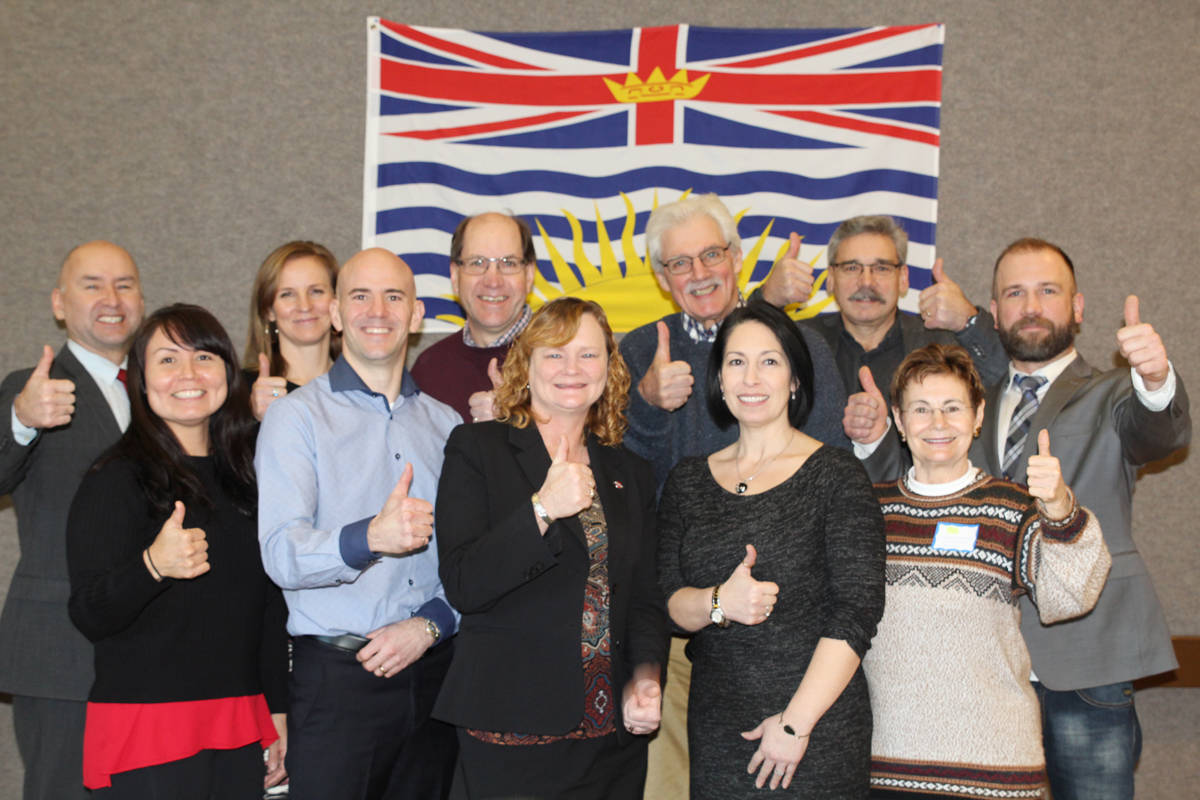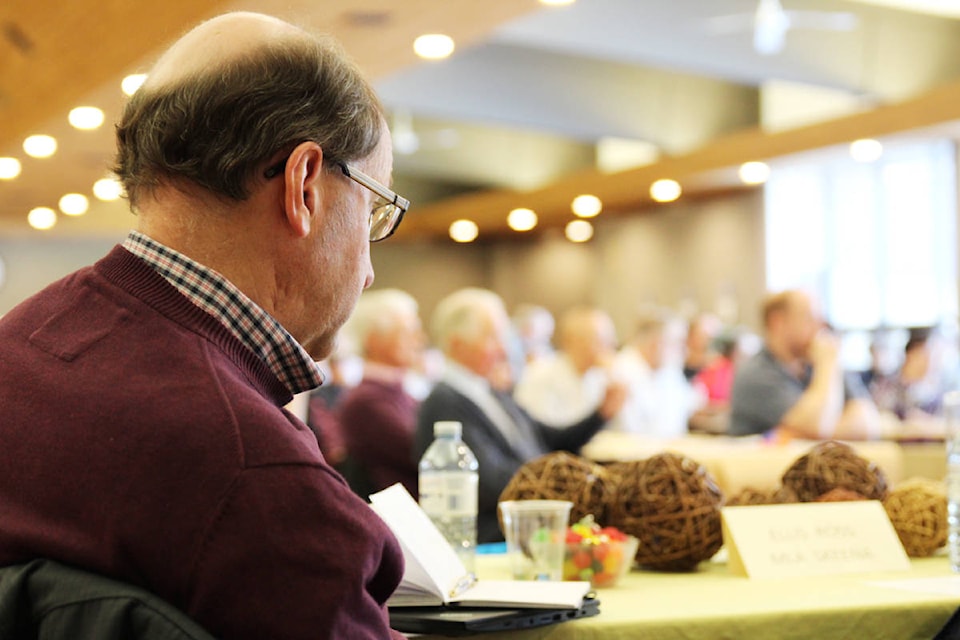The overwhelming sentiment expressed by the two proponents for LNG in Kitimat is that a groundswell of support from the community, the region and the province is crucial for positive Final Investment Decisions.
“If you want these projects to go ahead you have to support the people speaking out. If you want them to go ahead, please fight for them,” said global engineering, construction and project management company Bechtel’s sustainability and community relations official Melissa Case.
Case, LNG Canada Kitimat site manager Trevor Feduniak, LNG Canada senior consultation and community advisor Ruth Sulentich and LNG-Chevron policy, government and public affairs vice president Rod Maier made up a panel of speakers that addressed Kitimat residents attending a townhall at a packed Riverlodge on Saturday morning.
Case, a native of Australia, spoke about working on the project to build a liquefied natural gas complex on Curtis Island just north of the city of Gladstone, off the shore of Queensland.
Bechtel built in quick succession Queensland Curtis LNG, Australia Pacific LNG and Santos GLNG on the island, using modules that were constructed in China and the Far East and shipped to Australia.
A resident of Kitimat for the last two years, Case said it wasn’t practical to build the steel modules necessary for the two LNG projects in Kitimat in Canada.
“We don’t have the skills to build these modules in Canada. We also don’t have the space. The other problem is that these modules don’t exactly fit on the back of trucks,” said Case, referring to the difficulty of transporting the modules from either the east or south from Vancouver.
The modules built for the Curtis Island project were loaded onto barges and transported to the island where they were offloaded close to where the plants were built.
Bechtel faced similar opposition in Australia to the construction of the modules in the Far East and China that the LNG industry faces in Canada.
“If we had had to build the modules in Australia we would have had to build a site, resulting in a three-year delay to the project,” said Case. “The module builders have the proven ability to do this work.”
Sulentich said one of the cornerstones of a successful FID would be keeping the cost of the steel required for building the plant in Kitimat low.
“We need price certainty, certainty that the components will arrive here,” said Sulentich. “We have a small window of opportunity – the time is now.”
LNG Canada is calling on the federal government to exempt the Kitimat project from anti-dumping tariffs imposed on the import of large fabricated industrial steel components, which would come in from China.
Sulentich said the anti-dumping tariffs would increase the project cost and influence the company’s FID.
Maier said taxes and levies associated with the project “are a big obstacle”.
“Canada has the most complex fiscal structures not found elsewhere. We face nine different taxes and levies,” said Maier. “We have to allow for the proponents to receive a reasonable return on their investment.”
“With the current duties on these modules these projects cannot continue.”
He said LNG-Chevron is continuing to work with the provincial and federal governments to ensure a good fiscal framework.
“A lot of the elements are out of our control. Our current focus is on working with the First Nations to ensure their support and continuing to work on reducing the size, cost and emissions profile of the project.”
“We have to be cost competitive with other producers. The USA, which used to be our largest customer, is now our largest competitor,” said Maier. “By 2020 the U.S. will be the world’s largest exporter.”
While Feduniak mentioned a potential LNG Canada FID later in 2018, Maier said LNG-Chevron has not set a date for their FID.
“The near-term market is challenged and currently the market is oversupplied. We are looking at the long-term, the mid-2020s,” said Maier.
Feduniak said LNG Canada had received four technical bids and that the company’s technical team was reviewing the documents.
“We will shortlist down to two bids in the near future,” added Feduniak.
Both proponents are currently busy with site preparation and maintenance, with LNG Canada due to start test piling in the harbour in April.
The speakers unanimously agreed that community support for the projects is key and called on those attending the townhall to lobby provincial and federal government by sending letters of support to their MLAs and to the ministries involved in determining the fate of the projects, specifically the federal Finance Department, which has to decide whether to side with the proponents or the Canadian steel industry.

